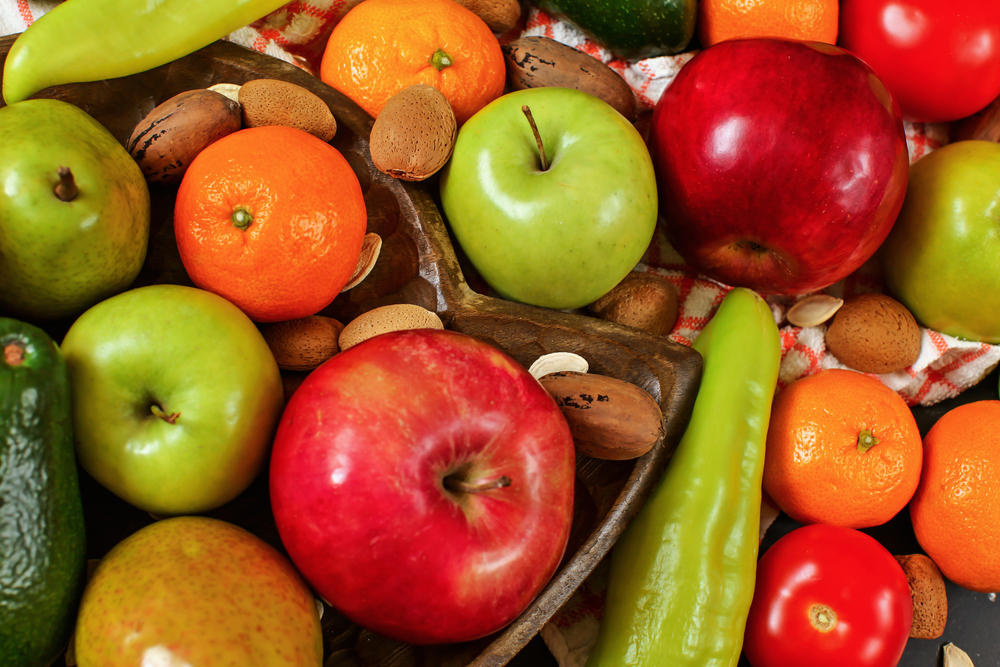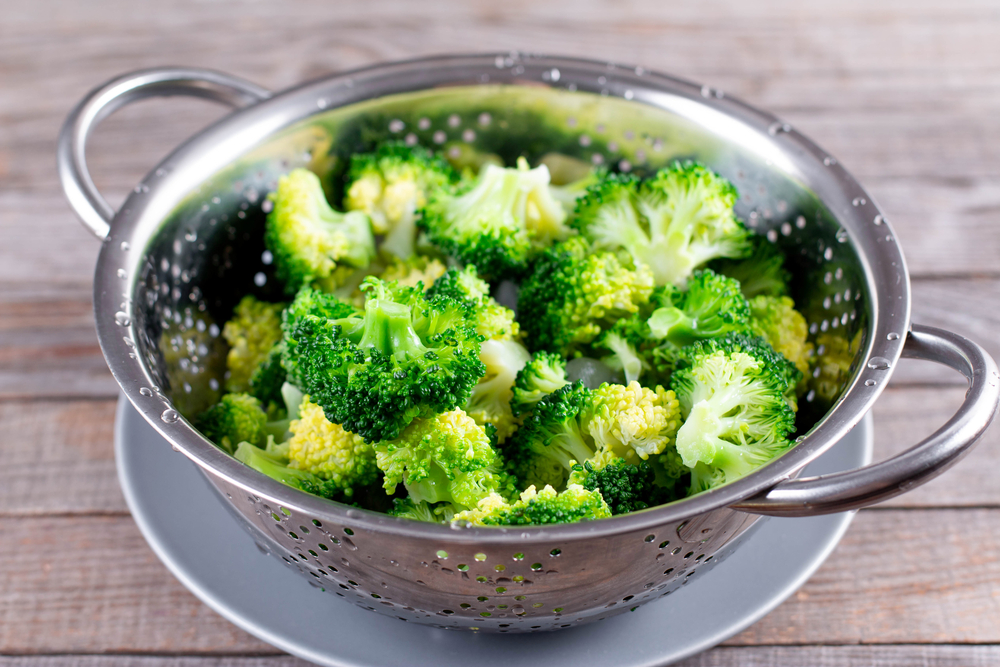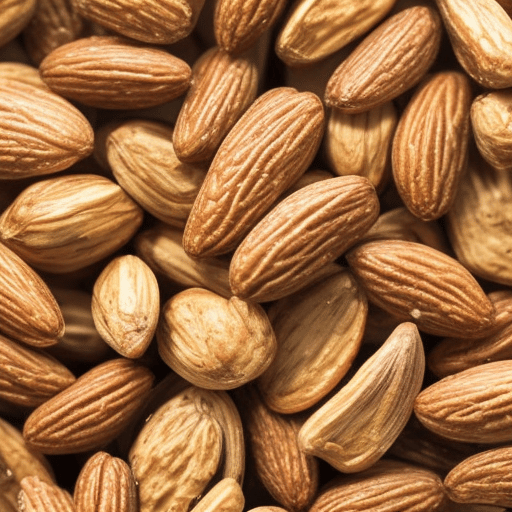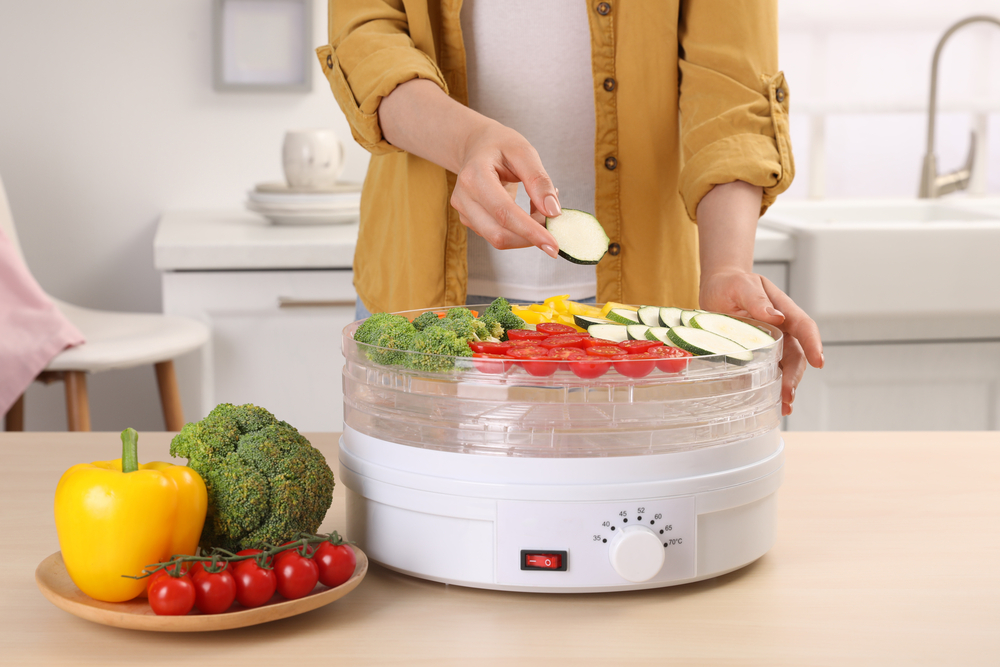Have you ever wondered how to use a dehydrator? There are few better ways to preserve your food than using a food dehydrator to banish the extra moisture within fruits and veggies. Dehydrating food can help you create all kinds of delicious snacks, like fruit leather and jerky. It’s also ideal if you’re keen to eat a raw food diet.
Food dehydrators are becoming increasingly popular worldwide as more people consume dried foods for healthier snacks and a wider variety of meals. Today, we’re going to explore the basics of using a dehydrator for drying all kinds of meats, fruits and vegetables.
What Kind of Food Can You Put in a Food Dehydrator?

Dehydrated foods are popular these days because people are investing more time and effort into maintaining a healthy diet. You can dehydrate just about any fresh food, but there are certain fruits and vegetables, among other items, that dehydrate better than others.
For instance, if you want healthy snacks, it makes sense to start drying fruits like peaches, pears, apples, bananas, apricots, and cherries. You can mix your dry fruits with granola and nuts for delicious energy on the go. Alternatively, you can dehydrate vegetables for food preservation or add flavour to soups, backpacking meals and stews.
You can also use a food dehydrator to make beef jerky and other dried meats and fish. You can dry all kinds of meats outside of the standard beef jerky and use them as ingredients for stew and soups too. Other popular foods to dehydrate include:
- Citrus fruits for air fresheners
- Nuts and seeds for trail mixes
- Herbs to use in cooking, baking and tea
- Sprouted grains like quinoa and barley
- Crackers, granola, and bread
The more you experiment with your food dehydrator, the more you’ll discover your dehydrated food options. A food dehydrator will allow you to dry everything from fruit and vegetables to nuts and meats. Check the manual for more guidance if your food dehydrator comes with an instruction booklet.
Preparing Foods for Dehydration
When you dehydrate foods, you can sometimes get a better result by adequately preparing the food first. The first step in getting delicious dried foods is to cut your ingredients to the right thickness.
It’s a good idea to experiment with different thicknesses in dry foods when you’re using food dehydrators for the first time. Depending on how thick your slicer is, you might find the drying process takes a little longer. The best food dehydrator might even come with different settings based on the thickness of your food and what you’re trying to dry with the in-built heating element.
The good news for people who don’t want to spend a lot of time preparing food is that you usually won’t have to peel everything you dehydrate. The most common reason for removing skins from fruits, vegetables, and other foods is to remove imperfections which might affect the quality of the food. However, if you know how to get your food to dry evenly, you shouldn’t have a problem leaving the skin on.
If you do want to remove the skins from vegetables and fruits like apricots, peaches and tomatoes, make sure you blanch them before you begin removing moisture. This means dipping the food in boiling water for up to 60 seconds, then in cold water for another 60 seconds until the skins start to lift.
Blanching and Dipping Foods

How you prepare your fruits and vegetables for food dehydration will often influence the drying times and how well your dehydrator works. Blanching your foods can be a good idea before you expose them to the low heat and warm air inside the airtight container of the dehydrator.
Usually, you’ll blanch vegetables that take longer to cook because it helps to preserve the natural flavours when drying at the right temperature. The easiest way to blanch your foods is to place them in a steamer basket and steam them for around 2 to five minutes. Wear gloves when working with meat, fruit, and vegetables to prevent cross-contamination.
The most common vegetables to blanch include kale, asparagus and broccoli. Keep an eye on the drying time to avoid browning when you dehydrate. Aside from blanching, you can also consider using dipping to preserve the colour and texture of your foods. For instance, the following common dipping options stop light-coloured fruits from browning:
- Fruit juice: Stir around 1 cup of lemon juice or pineapple juice into a quart of water. Dip your fruit for up to 10 minutes, then drain everything. Fruit juice isn’t as good as other substances for dipping, but it can help preserve some flavour.
- Citric acid: Dipping your food in citric acid before placing it in the dehydrator can help you enjoy better quality food. You’ll usually get a tarter taste from your dehydrator this time. Dissolve around one tablespoon of citric acid in water to use this dip.
- Ascorbic acid: Often considered the best dehydrator prep method, ascorbic acid is ideal for keeping your food looking and tasting great. This substance won’t have as much of an influence on the flavour as the other options mentioned here. Results will vary depending on the fruit or vegetable you’re dipping.
- Bisulfite powder: You can also use a teaspoon of bisulfite powder mixed with about a quart of water to get some decent results from your dehydrator.
How to Use Food Dehydrators Correctly
Using electric dehydrators is usually a pretty easy process. However, it’s worth reading through the instructions provided by the company that made your dehydrator before you begin. This will help you determine what features your dehydrator has, such as an adjustable thermostat for temperature control and different trays for dehydrating multiple meat items at the same time.
Here’s some advice for when you dehydrate food to help you make your own snacks and dried food, including dried fruit and jerky.
Dehydrating Fruits and Vegetables
When dehydrating fruits, start by choosing high-quality ripe produce at its peak sugar content. Look out for anything bruised or overripe. Consider dipping your fruits and vegetables in enzyme inhibitors or look into blanching to keep the fruits in good condition at a high temperature. Try to cut your food into the same size strips where possible.
You’ll usually need to dehydrate fruits like apples and pears at around 135 to 145 Fahrenheit temperature for between 6 to 16 hours. Check on your food regularly to see if it is pliable.
If you’re planning on dehydrating vegetables, don’t start a new batch until the other foods have finished dehydrating. Vegetables dry faster than fruits but also spoil faster. Make sure you do everything you can to preserve your fruits’ freshness. This includes removing any tough pieces of stem or skin and getting rid of spots and bruises.
Blanch when necessary and place your food on non-stick sheets after dehydrating within an airtight container to stop it from spoiling. Try to avoid using strong-smelling vegetables.
Dehydrating Meat and Fish
When dehydrating meat and fish, try to choose only low-fat, lean and fresh meat, as the fat will spoil more rapidly. Avoid dehydrating pork unless you’re using cured and sliced ham.
When dehydrating cooked meat, it’s also essential to remove as much fat as possible and cut the meat into cubes as small as possible. If you have around nine trays of meat to cook, only dehydrate a small amount at a time. Pat the meat dry between sessions if oil escapes.
To make meat snacks for camping trips, try to cut the meat into thin, uniform strips and use a salty rub or marinade to get the most out of the flavour. Cure the meat for around 6 to 12 hours before dehydrating.
Drying Nuts, Seeds and Herbs

Fruit and vegetables may be the most commonly dehydrated food items, but there are other forms of dehydrated food to experiment with. We’ve already mentioned options like fruit leather. Depending on your dehydrator trays and the features of various food dehydrators, you can also try dehydrating nuts, seeds, and herbs.
To dehydrate foods like nuts and seeds, try to make sure you cover them in water before spreading them on your food dehydrator trays. You won’t need to use things like citric acid as an anti-bacterial vegetable cleaner here. Try to keep the heating element at a low level so the hot air doesn’t burn your nuts and seeds.
Your device is also great for dehydrating herbs. You can dry herbs to add to an instant pot of soup and other recipes. Drying herbs also improves their shelf life significantly.
Making the Most of Food Dehydrators
Preserving and dehydrating food is quite an easy process once you know how to use a dehydrator.
Some fruits, vegetables, and meats will take longer to dry than others. Food with a lot of moisture, like pineapples with a lot of juice, will sometimes take more than a day at the right temperature to dry. After drying your foods, make sure you keep them stored correctly, preferably in airtight containers.
If you found this guide helpful, please share it on social media. For more tips on dehydrating meats and fresh produce, check out our other how-to guides!

